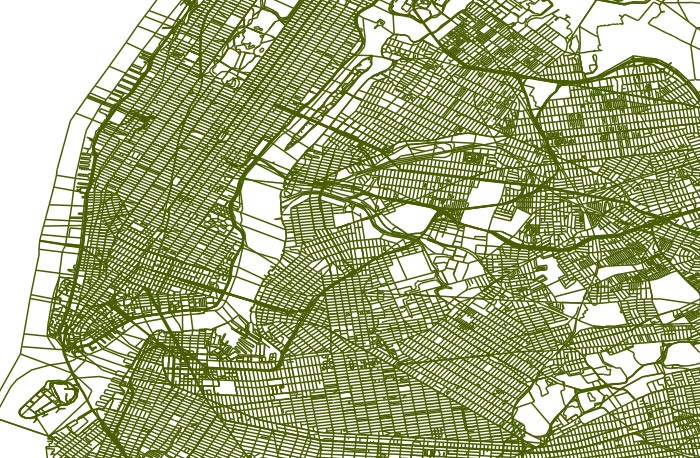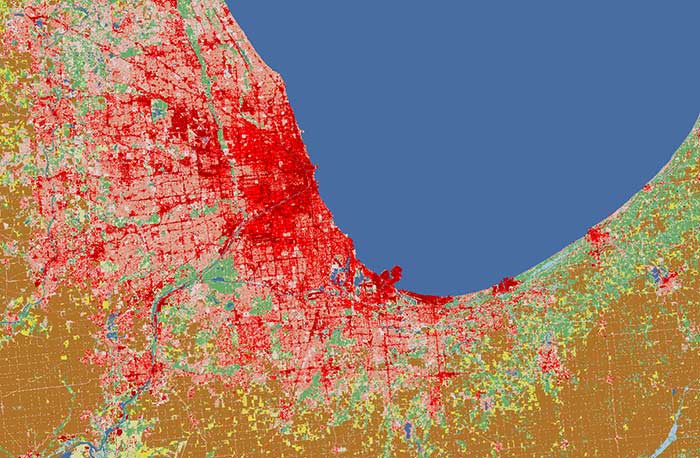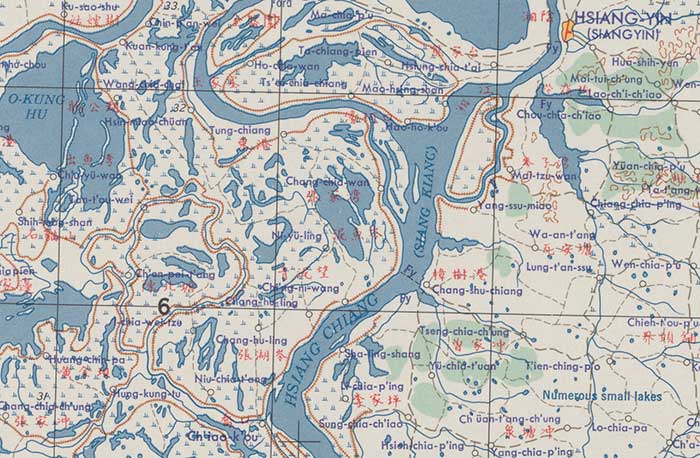View Metadata
Windham County, Vermont roads, 2014
- Identification Information
- Data Quality Information
- Spatial Data Organization Information
- Spatial Reference Information
- Entity and Attribute Information
- Distribution Information
- Metadata Reference Information
- Identification Information
- Citation
- Originator
- Enhanced 9-1-1 Board
- Publication Date
- 20121101
- Publication Time
- unknown
- Title
- Windham County, Vermont roads, 2014
- Edition
- 2012A
- Geospatial Data Presentation Form
- vector digital data
- Series Information
- Series Name
- E911 Road centerline data
- Issue Identification
- 2012A
- Publication Information
- Publication Place
- 90 Throckmorton Ave #26, Mill Valley, CA, 94941, US
- Publisher
- Boundary Solutions, Inc.
- Other Citation Details
- Tile Structure - STATE
- Online Linkage
- https://figgy.princeton.edu/downloads/b8442a65-29be-4121-ac05-753bdf04d747/file/b9ecad6c-81a5-49a0-9ffe-d1753f4a65fa
- Abstract
- Roads and highways in Windham County, Vermont, 2014.
- Purpose
- For displaying roads with GIS software.
- Temporal Extent
- Currentness Reference
- Publication date.
- Time Instant
- 20121101
- Bounding Box
- West
- -73.009820
- East
- -72.433997
- North
- 43.262934
- South
- 42.726063
- Theme Keyword
- roads
- highways
- Theme Keyword Thesaurus
- None
- Theme Keyword
- transportation
- Theme Keyword Thesaurus
- ISO 19115 Topic Categories
- Place Keyword
- Vermont
- Windham County
- Windham
- Place Keyword Thesaurus
- None
- Temporal Keyword
- 2014
- Temporal Keyword Thesaurus
- None
- Access Restrictions
- None
- Use Restrictions
- Data are licensed to Princeton University-affiliated persons only. VCGI and the State of Vermont make no representations of any kind, including but not limited to the warranties of merchantability or fitness for a particular use, nor are any such warranties to be implied with respect to the data.
- Status
- Complete
- Maintenance and Update Frequency
- Monthly
- Point of Contact
- Contact Organization
- Map and Geospatial Information Center, Lewis Library, Princeton University
- Delivery Point
- Map and Geospatial Information Center, Lewis Library, Princeton University
- City
- Princeton
- State
- NJ
- Postal Code
- 08544
- Country
- US
- Contact Telephone
- 609-258-1097
- Point of Contact
- Contact Organization
- Enhanced 9-1-1 Board
- Delivery Point
- 94 State Street - Drawer 20
- City
- Montpelier
- State
- VT
- Postal Code
- 05620-6501
- Country
- US
- Contact Telephone
- 800-342-4911
- Contact Facsimile Telephone
- 800-342-4911
- Contact Electronic Mail Address
- info@vcgi.org
- Hours of Service
- 9am - 5pm, M-F
- Credit
- National ParcelMap Data Portal/E911
- Native Data Set Environment
- Microsoft Windows 7 Version 6.1 (Build 7601) Service Pack 1; Esri ArcGIS 10.2.0.3348
- Data Quality Information
- Attribute Accuracy Report
- Proof plots were generated by the original contractor and checked by the contractor. VCGI (then OGIS) staff verified the accuracy and attribute errors of all arcs. Corrections made by the contractor were spot checked by VCGI staff. Additional corrections were made directly by VCGI staff. All line work was checked by VCGI staff with translucent paper proof plots anchored to the source photos with 1000 meter tics. Attributes were checked against VTrans highway maps. Frequency files were generated from the final data to reveal unlikely and impossible attribute combinations (e.g., a gravel US highway). Subsequent to the original digitizing, VCGI has made many minor corrections to road numbers, classes and other attributes, discovered while implementing new attributes and working with the data. See the VGIS Standard on 'Updating the Road Centerline Data Layer' (see VGIS Handbook) for details on quality control measures used for regional data updates. CHANGES MADE BY E911 CONTRACTOR; E911 updates performed via the Enhanced 9-1-1 Addressing project (1996-1997) were verified for consistency per the VGIS Standard on 'Updating the Road Centerline Data Layer'. The consistency of geo-coding (addressing) was also checked. Updates performed after October 1997 have not been QA/QCed by VCGI.
- Quantitative Attribute Accuracy Assessment
- Logical Consistency Report
- OVERVIEW; The EmergencyE911_RDS coverage was derived from Vermont's "master" Road Centerline Data Layer (RDSnn). E911's primary contractor updated RDSnn, modified its attribute structure (added and dropped attributes), removed unwanted pseudo nodes, and created the resulting EmergencyE911_RDS coverage. The EmergencyE911_RDS coverage is designed for use within E911's emergency response system. It is maintained independently from the RDSnn data layer. ORIGINAL DATA; The original RDSnn data layer included all roads appearing on the official VT Agency of Transportation (VTrans) highway maps, with most road locations determined from RF 5000 orthophotos (or better). When road locations were not clear from the orthophotos, an accuracy code (RDSACC) was used to record uncertainty in the location. In cases where roads were built after the orthophotos were flown, locations were generally approximated based on VTrans maps. The accuracy of some road locations were improved in the EmergencyE911_RDS through the use of GPS technology (Enhanced 9-1-1 Addressing Project; microDATA 1996-1998). The original digitizing of the road centerline data was done by Greenhorne O'Mara Inc., Deluth GA, 1991-92 using Arc/Info (VAX). Many subsequent updates have been made by Regional Planning Commissions, their contractors and VCGI using various digitizing techniques. MAINTENANCE; The original RDSnn data was historically maintained by VCGI (about 30 MB and 65,000 arcs statewide), with updates being performed by Regional Planning Commissions, their contractors, and VCGI. The intention is that the RDSnn data be maintained in a 'master', comprehensive layer from which other roads layers may be derived. VTrans will take on management responsibility for the layer in 1999. The EmergencyE911_RDS data layer has been "split off" from RDSnn and has become and independent coverage maintained by Vermont's Enhanced 911 Board. VTrans attributes in the EmergencyE911_RDS coverage (such as RTNO and CLASS) may not reflect "official" VTrans information. Users requiring the latest RTNO, CLASS, and other VTrans attributes should utilize RDSnn. Users who want road name and address range information should use EmergencyE911_RDS. Again, these two data layers are being maintained independently and therefore may not align spatially, even though they generally will in many cases (since they are based on the same original data set). The EmergencyE911_RDS data should not be clipped to a town boundary, since some attributes near the boundary will likely be improperly clipped. Instead, the MCODE or FIPS6 (added by VCGI) town code attribute can be used to extract arcs by town. Refer to E911\TBPOLY for a lookup table matching FIPS6 to MCODE and TOWNAME. E911 CONTRACTOR UPDATES; Updates to the data via the Enhanced 9-1-1 project have affected "private" roads. According to E-911 standards, a road coded as "private" in the RDS data will be considered a "private road" if it leads to 3 or more buildings (emergency sites - EmergencyE911_ESITE). However, if a road coded as "private" leads to two buildings or less, its considered a "driveway" and therefore has been moved to the EmergencyE911_DW (driveways) coverage. Driveways were not added to the EmergencyE911_RDS coverage because it would have split existing ARCs in too many places.
- Completeness Report
- Line accuracy standards for the original data conversion were set as being within the confines of the visible road surface. All roads were checked for both line and attribute accuracy by VCGI. The line work was checked with translucent proof plots anchored to the source photos with 1000 meter tics. Most road centerlines are expected to fall within about 6 meters of their true ground locations (except in cases where the wrong road was digitized/attributed, where orthophotos do not meet national map accuracy standards, where road locations were not clearly visible on the photos, or roads that have been built since the orthophotos were taken). As noted by Chittenden County "It is estimated that centerlines fall within the tax right-of-way 99% of the time." Road arcs were edgematched at the orthophoto boundaries with a complex algorithm, based on the distance between arc endpoints in adjoining photos, and on the arc attributes. Adjustments were made at photo edges (both automatically and manually) when needed, so minimal line error may have been introduced at the photo edges in some cases. Also, short road sections (generally less than 1 cm equals 50 meters on the ground) were added when needed at the corners of the photos without reference to the source maps, but only in cases where the road location was obvious. CHANGES MADE BY E911 CONTRACTOR; The Enhanced 911 program's primary contractor collected new road locations and corrected inaccuracies in the old centerlines using GPS receivers in the field. These centerlines are generally expected to be within 5 meters of its true location, but variations in GPS data collection quality can create variable results. Last Update Was: 9/15/08
- Horizontal Positional Accuracy Report
- Line accuracy standards for the original data conversion were set as being within the confines of the visible road surface. All roads were checked for both line and attribute accuracy by VCGI. The line work was checked with translucent proof plots anchored to the source photos with 1000 meter tics. Most road centerlines are expected to fall within about 6 meters of their true ground locations (except in cases where the wrong road was digitized/attributed, where orthophotos do not meet national map accuracy standards, where road locations were not clearly visible on the photos, or roads that have been built since the orthophotos were taken). As noted by Chittenden County "It is estimated that centerlines fall within the tax right-of-way 99% of the time." Road arcs were edgematched at the orthophoto boundaries with a complex algorithm, based on the distance between arc endpoints in adjoining photos, and on the arc attributes. Adjustments were made at photo edges (both automatically and manually) when needed, so minimal line error may have been introduced at the photo edges in some cases. Also, short road sections (generally less than 1 cm equals 50 meters on the ground) were added when needed at the corners of the photos without reference to the source maps, but only in cases where the road location was obvious. CHANGES MADE BY E911 CONTRACTOR; The Enhanced 911 program's primary contractor collected new road locations and corrected inaccuracies in the old centerlines using GPS receivers in the field. These centerlines are generally expected to be within 5 meters of its true location, but variations in GPS data collection quality can create variable results.
- Lineage
- Source
- Originator
- E911 Board
- Publication Date
- 20121101
- Publication Time
- unknown
- Title
- EmergencyE911_RDS
- Geospatial Data Presentation Form
- vector digital data
- Publication Information
- Publication Place
- Montpelier, VT
- Publisher
- E911 Board
- Source Scale Denominator
- 0
- Type of Source Media
- hardcopyPhoto
- Source Temporal Extent
- Time Period Information
- Single Date/Time
- Calendar Date
- 20121101
- Time of Day
- unknown
- Source Currentness Reference
- Publication Date
- Contribution
- E911 Board
- Spatial Data Organization Information
- Direct Spatial Reference Method
- Vector
- Point and Vector Object Information
- SDTS Terms Description
- SDTS Point and Vector Object Type
- String
- Point and Vector Object Count
- 6427
- Spatial Reference Information
- Horizontal Coordinate System Definition
- Planar
- Map Projection
- Map Projection Name
- NAD 1983 StatePlane Vermont FIPS 4400
- Transverse Mercator
- Scale Factor at Central Meridian
- 0.9999642857142858
- Longitude of Central Meridian
- -72.5
- Latitude of Projection Origin
- 42.5
- False Easting
- 500000.0
- False Northing
- 0.0
- Planar Coordinate Information
- Planar Coordinate Encoding Method
- coordinate pair
- Coordinate Representation
- Abscissa Resolution
- 0.0000000022208457295391785
- Ordinate Resolution
- 0.0000000022208457295391785
- Planar Distance Units
- meter
- Geodetic Model
- Horizontal Datum Name
- D North American 1983
- Ellipsoid Name
- GRS 1980
- Semi-major Axis
- 6378137.0
- Denominator of Flattening Ratio
- 298.257222101
- Entity and Attribute Information
- Entity Type
- Entity Type Label
- roads_50025_2014
- Entity Type Definition
- Polylines representing roads.
- Entity Type Definition Source
- VCGI
- Attributes
- FID
- Internal feature number. (Sequential unique whole numbers that are automatically generated.)
- Definition Source
- ESRI
- Shape
- Feature geometry. (Coordinates defining the features.)
- Definition Source
- ESRI
- SEGMENTID
- Alternate feature ID.
- Definition Source
- VCGI
- PD
- Directional prefix.
- Definition Source
- VCGI
- SN
- Street name.
- Definition Source
- VCGI
- ST
- Type suffix.
- Definition Source
- VCGI
- SD
- Directional suffix.
- Definition Source
- VCGI
- GEONAMEID
- Geographic name ID.
- Definition Source
- VCGI
- PRIMARYNAM
- Primary street name.
- Definition Source
- VCGI
- ALINAME
- Street alias.
- Definition Source
- VCGI
- ALIAS1
- Street alias.
- Definition Source
- VCGI
- ALIAS2
- Street alias.
- Definition Source
- VCGI
- ALIAS5
- Street alias.
- Definition Source
- VCGI
- COMMENTS
- Comments.
- Definition Source
- VCGI
- SURFACETYP
- Surface type.
- Definition Source
- VCGI
- ONEWAY
- Indicates whether feature is a one-way road.
- Definition Source
- VCGI
- LTWN
- Town on left side of road.
- Definition Source
- VCGI
- RTWN
- Town on right side of road.
- Definition Source
- VCGI
- LLO_A
- Definition Source
- VCGI
- RLO_A
- Definition Source
- VCGI
- LHI_A
- Definition Source
- VCGI
- RHI_A
- Definition Source
- VCGI
- LZIP
- ZIP code on left side of road.
- Definition Source
- VCGI
- RZIP
- ZIP code on right side of road.
- Definition Source
- VCGI
- LLO_T
- Definition Source
- VCGI
- RLO_T
- Definition Source
- VCGI
- LHI_T
- Definition Source
- VCGI
- RHI_T
- Definition Source
- VCGI
- RTNUMBER
- Route number.
- Definition Source
- VCGI
- AOTCLASS
- Agency of Transportation class.
- Definition Source
- VCGI
- UPDATEDATE
- Date of update.
- Definition Source
- VCGI
- Shape_len
- Length of feature.
- Definition Source
- VCGI
- Distribution Information
- Format Name
- SHP
- Distributor
- VT Center for Geographic Information
- Name
- Metadata Reference Information
- Metadata Date
- 20160810
- Metadata Contact
- Contact Information
- Contact Organization Primary
- Contact Organization
- Map and Geospatial Information Center, Lewis Library, Princeton University
- Contact Address
- Address
- Map and Geospatial Information Center, Lewis Library, Princeton University
- City
- Princeton
- State or Province
- NJ
- Postal Code
- 08544
- Country
- US
- Contact Voice Telephone
- 609-258-1097
- Metadata Standard Name
- FGDC Content Standard for Digital Geospatial Metadata
- Metadata Standard Version
- FGDC-STD-001-1998


